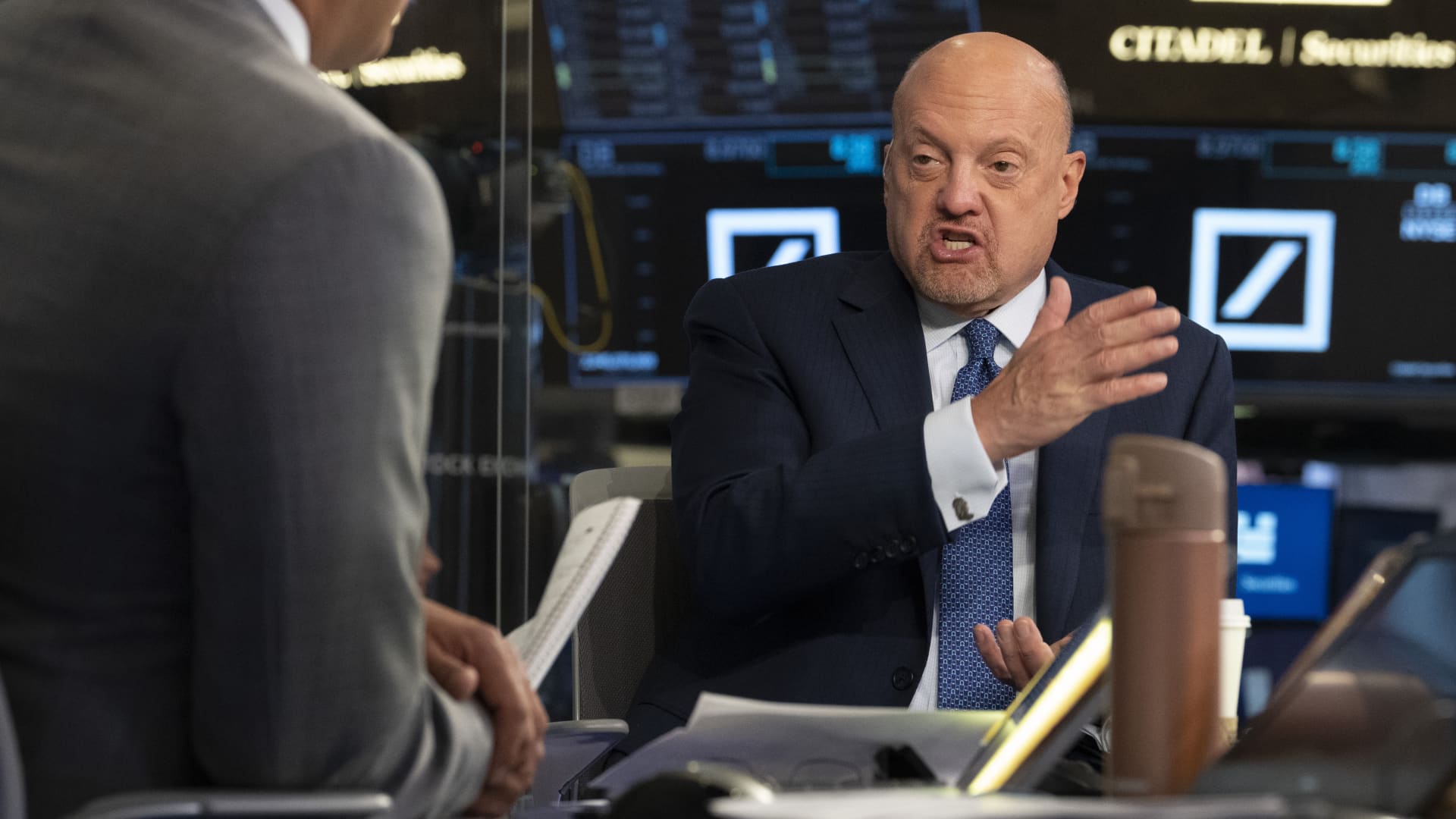
Sunset view of Yarra river and Melbourne skyscrapers business office building with evening skyline in Victoria, Australia. Australia tourism, modern city life, or business finance and economy concept
Prasit Photo | Moment | Getty Images
Asia-Pacific markets extended their sell-off Monday as fears over a global trade war sparked by U.S. President Donald Trump’s tariffs fueled a risk-off mood.
Japanese markets led losses in the region in early trade. The benchmark Nikkei 225 plunged 8.03% while the broader Topix index plummeted 8.64%.
Over in South Korea, the Kospi index fell 4.34% at the open, while the small-cap Kosdaq fell 3.48%.
Australia’s S&P/ASX 200 declined 6.07% at the open. The benchmark slid into correction territory with an 11% decline since its last high in February, in its previous session.
Futures for Hong Kong’s Hang Seng index stood at 22,772 pointing to a stronger open compared to the HSI’s last close of 22,849.81.
U.S. futures dropped as investors’ hopes of the Trump administration having successful negotiations with countries to lower the rates were dashed.
Meanwhile, U.S. oil prices dropped below $60 a barrel on Sunday stateside. Futures tied to U.S. West Texas intermediate crude fell more than 3% to $59.74, their lowest since April 2021.
Trump’s top economic officials dismissed any fears of inflation and recession, declaring that tariffs would persist whatever markets may do.
Stocks in the U.S. sold off sharply last Friday, after China retaliated with fresh tariffs on U.S. goods, sparking fears of a global trade war that could lead to a recession in the world’s largest economy.
The Dow Jones Industrial Average dropped 2,231.07 points, or 5.5%, to 38,314.86 on Friday, the biggest decline since June 2020 during the Covid-19 pandemic.
The S&P 500 nosedived 5.97% to 5,074.08, its biggest decline since March 2020.
Meanwhile, the Nasdaq Composite, which captures many tech companies that sell to China and manufacture there as well, dropped 5.8%, to 15,587.79. This takes the index down by 22% from its December record, representing a bear market in Wall Street terminology.
— CNBC’s Brian Evans, Alex Harring and John Melloy contributed to this report.







